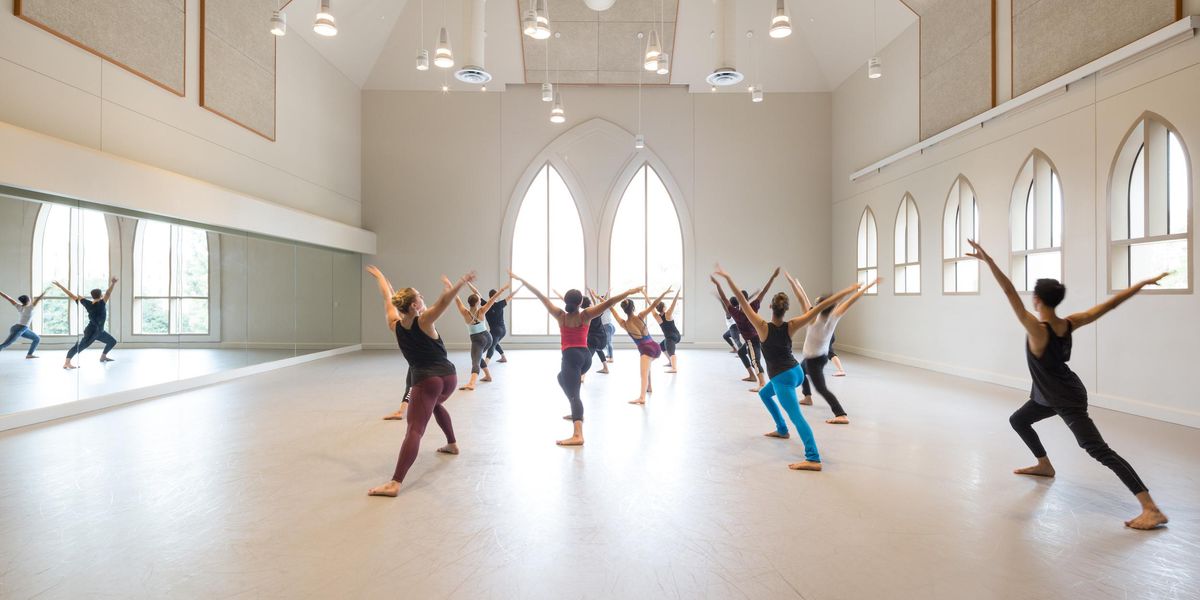Why I Dance: Troy Ogilvie
With a blend of raw physicality and feminine strength, Troy Ogilvie captivates audiences. The Piscataway, NJ, native graduated from the Juilliard School in 2007 and joined Gallim Dance later that year. In a company that requires improvisational involvement in the creative process, she is both a dancer and rehearsal director. Last year she produced and performed a solo show, Reset, with choreography by Margie Gillis, Shannon Gillen, Austin McCormick, and Harumi Terayama. A 2011 “25 to Watch,” Ogilvie also serves as program manager for Alexandra Wells’ Movement Invention Project, a three-week summer program for 17- to 22-year-olds.
I dance because it is fun. I dance because I love to perform. I dance because I always have. These clichés were all accurate at one point, but none apply today.
The reason I started to dance at age 3 is blurred by time and accented with gym mats, tap shoes, pink blush, and blue eye shadow. I’m pretty sure that I thought learning jazz, tap, and ballet at Miss Carol’s School of Dance was awesome. I smiled with a flush of excitement while flying through my favorite side-straddle split jump. So, in the beginning, I danced because it was fun.
I grew to love the theater—the backstage perfumes of sawdust from the prop room, slightly musty costumes, hairspray, makeup remover, and flowers. I was mesmerized by the rituals and weird superstitions, like saying “merde” instead of “good luck” and our Sugarplum Fairy refusing to handle an open safety pin pre-show. Craving more stage time, I thrived on secret competition with other dancers in ballet class. Luckily, my expressiveness and determination outweighed my bowed legs when it came to filling the roles of Nutcracker divertissements. Throughout high school I danced because I loved to perform.
The conservatory training that followed introduced me to the profession of dance without leaving much time to consider “why.” I danced with an eagerness to please my teachers and rigorously worked on my technique and performing. Fascinating conversations in composition class piqued my interest in choreographic structure. But the more I understood about dance as an art the more shy I was when dancing socially. I felt too vulnerable without the protection of choreography and a fourth wall. While I continued to feel alive onstage, in college I danced because I was trained to.
Looking back, I find there was a benefit in losing myself in the training of capable teachers. The tricky part was to then forge a philosophy and lifestyle that reflected my still malleable personal beliefs and interests. There is no guide for leaving the nurturing bubble of conservatory training for life in New York City. The difficulties of freelancing—fueled by a lack of public support for the arts—humbled my ego, challenged my ambition, and tested my certainty. While in the past I could turn to my ego for confidence and my ambition for power, I found that these elements no longer sustained me. For a few years after graduation, I found myself dancing mainly because I always had.
Finding this situation unfulfilling, I dug into my core to honestly identify why I dance today. Here are some personally mined revelations:
• I am inspired by trying on the identities of choreographers and their creations, confusing my truths with theirs.
• I am captivated by the humanity of weird, idealized, scarred, romantic, monomaniacal, unsure, manipulative, stubborn, awkward, or naïve people.
• I am seduced by the opportunity to freely reveal my most private thoughts and convictions without the fear of overexposure, protected by theatrical artifice.
Dance, as with all art, can loosen the constraints of reality, allowing definitions to blur and logic to get lost in fantasy and desire. Happily, our bodies provide anchors, enabling us to use our gut and our heart instead of only our heads. When my mind threatens to paralyze my body with theories of “why,” I welcome the simple distraction of groove, allowing my body to do the thinking for me.
Troy Ogilvie. Photo by Jubal Battisti, Courtesy Ogilvie.




